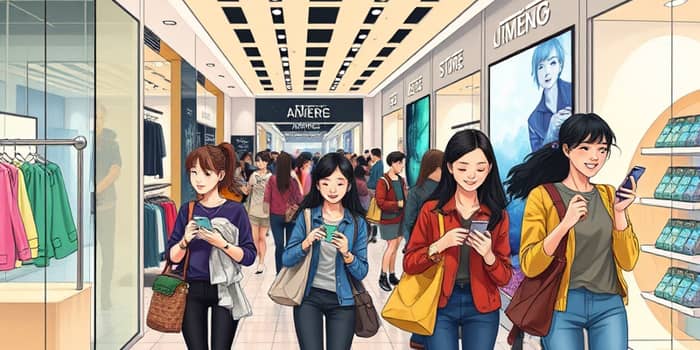
Over the past five years, the retail landscape has experienced a dramatic transformation. Following historic highs in savings rates and unprecedented online shopping growth during the COVID-19 crisis, consumers have now come roaring back, reshaping the industry and setting new records worldwide. As brick-and-mortar stores embrace technology and shoppers pursue both convenience and experience, retailers face a unique moment to innovate and thrive.
By the end of 2025, total worldwide retail sales are projected to hit $32.4 trillion, reflecting a robust 4.37% growth over the previous year. While growth is expected to decelerate to a 2.67% CAGR through 2030, the recovery from the pandemic-induced slump remains striking. In the same period, the U.S. retail market is forecast to reach $7.4 trillion in sales, with year-over-year expansion stabilizing around 0.4% after a rapid post-pandemic bounce.
In Q1 2025 alone, U.S. retail sales topped $1.86 trillion, underscoring the market’s resilience. E-commerce continues to lead digital momentum, accounting for 16.2% of these sales domestically and an impressive 24% of global retail sales—amounting to an expected $6.86 trillion worldwide in 2025.
At the height of the pandemic, U.S. personal savings rates soared to 26.6% in March 2021, fueled by stimulus checks and stay-at-home orders. As restrictions lifted, consumers shifted gears from sheltering and saving to spending. The National Retail Federation noted a jump to $4.3 trillion in U.S. retail spending in 2021, compared to $3.9 trillion in 2019.
This rebound was driven by a pent-up desire to make up for lost time. Travel, dining out, and in-store shopping all surged as people sought social connection and tangible experiences. By 2022, a remarkable 94% of U.S. consumers had returned to physical stores, signaling a strong appetite for in-person retail after the digital-only phase.
One of the most lasting legacies of the pandemic is the seamless fusion of online and offline shopping. Gen Z and millennials—digital natives—drive this trend, blending channels to curate personalized journeys. Today, 75% of U.S. shoppers split their purchases between e-commerce and brick-and-mortar locations.
Retailers accelerated digital investments during the pandemic, and that momentum shows no signs of slowing. AI-driven inventory management and personalization engines now form the backbone of many operations, enabling real-time adjustments and targeted promotions.
Mobile apps, chatbots, and augmented reality are becoming standard tools to engage customers. From virtual try-ons to in-store navigation assistance, these technologies offer immersive experiences that bridge the physical-digital divide. As retailers refine these capabilities, they cultivate deeper loyalty, boost average order values, and streamline operations.
Even as 7,000–8,000 U.S. stores announced closures in 2024, retail space remains in high demand. Vacancy rates hover between 4% and 5%—near historic lows—and neighborhood center rents have climbed to a record $25.5 per square foot. Retailers are responding by optimizing footprints, maintaining fewer but more profitable stores, and repurposing space for experiences, fulfillment centers, and community events.
With over one million brick-and-mortar outlets and 1.8 million online retailers in the U.S., competition is fierce. The winners will be those who strike the right balance between physical presence and digital agility.
Despite the strong recovery, hurdles remain. Government stimulus bolstered spending initially but contributed to inflation pressures that strained household budgets. Many consumers have drawn down pandemic-era savings, and higher input costs continue to squeeze margins.
Nevertheless, the long-term outlook is promising. E-commerce penetration will continue rising, especially in Asia-Pacific markets that lead global digital adoption. Meanwhile, sustainability and social responsibility are fast becoming purchase drivers, inviting retailers to innovate responsibly.
From pandemic-induced saving frenzies to record-breaking post-pandemic spending, the retail sector has proven its ability to adapt and thrive. Retailers that invest in technology, embrace omnichannel strategies, and optimize their physical footprints are poised to capture both consumer enthusiasm and market share. As the world moves beyond COVID-19, one thing is clear: the retail renaissance is here, powered by innovation, experience, and the unwavering desire of people to connect, discover, and enjoy the simple pleasure of shopping.
References













